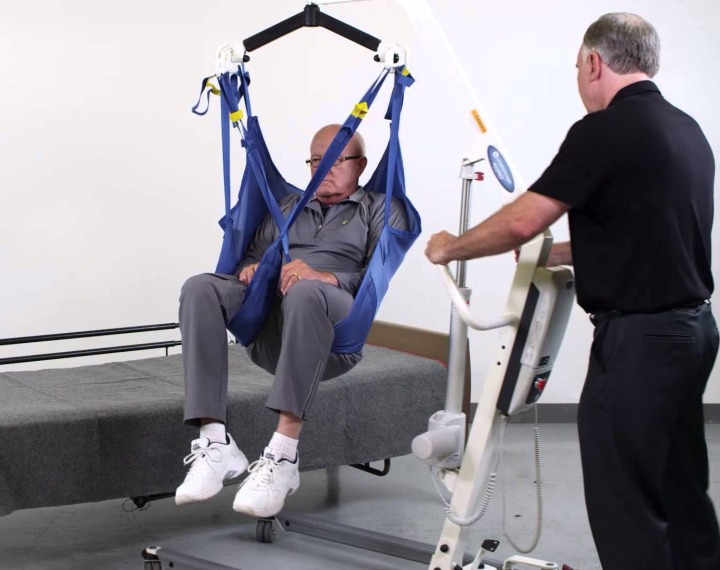Using Lifts & Slings: Safety Tips & Advice
 For residents with mobility problems, one of the only ways to get them out of bed or into the bath is with the use of a sling and lift. Ensuring that all maneuvers and lifts are performed in a safe manner is crucial, not only for the safety of your residents but also for the safety of your staff.
For residents with mobility problems, one of the only ways to get them out of bed or into the bath is with the use of a sling and lift. Ensuring that all maneuvers and lifts are performed in a safe manner is crucial, not only for the safety of your residents but also for the safety of your staff.
What are the risks?
A study performed by the NHS revealed that one of the most common injuries that carers sustain are back injuries, caused by not knowing how to lift and move residents safely. As for the person being lifted, if they’re not lifted in a safe manner, they too could sustain injuries. The most common injuries that residents sustain from being unsafely lifted are bruises, scrapes, breathing problems, and in more severe cases, broken or fractured bones if dropped.
As well as the potential to cause injuries, moving residents in an unsafe way can also lead to legal implications. Which is another reason why it’s so important to get it right when it comes to moving your residents. According to the Health and Safety Executive website, the most important things are to avoid the need for dangerous moving, assess all risks of injury, and reduce these risks as far as possible.
Are slings and lifts the safest method of moving residents?
The safest way to move residents with mobility problems is with the use of slings and lifts. Of course, this depends on whether the specialist equipment that is used is of a high quality, and is properly installed.
At CLH, we offer a wide range of lifting hoists, all of which have been tested to the highest standards to ensure that they are as safe and sturdy as possible. Each lift and hoist that we offer is ergonomically designed to be safe, easy to use for both the resident and the carer, and, most importantly, comfortable. They are also designed to have minimum to little exertion upon the body, making them easier and safer for carers to use. The less exertion a lift or hoist requires, the less chance that a carer will sustain an injury associated with using it.
Each lift that we offer has been designed to remain stable at all times and to offer a smooth, easy lift. As well as this, most of the lifting equipment we offer is suitable for safe use even in the smallest of spaces.
As well as offering a range of lifts and slings, including a variety by Joerns Oxford, we also have our own lifting hoist - Cosdon Patient Lifting Hoist. Thanks to our many years of experience in selling and servicing patient hoists, we decided to create our own design which features every good thing we have ever come across in hoist designs.
How can lifts and slings be made safer?
The best way that the use of slings and lifts can be made safer is by ensuring that all team members are properly trained in how to use them. This means that not only should staff receive training when they first start working in your care home, but also on a regular basis, to ensure that they are kept up to date with any new equipment or changes to how a lift or sling works.
Although all of the hoists and lifts that we sell are designed to be easy and safe to use, it’s still crucial that all lifts and hoists are set up and installed by one of our skilled team members. It’s also important that all equipment is properly maintained and serviced - this helps to prevent accidents and injuries due to wear and tear of equipment.





